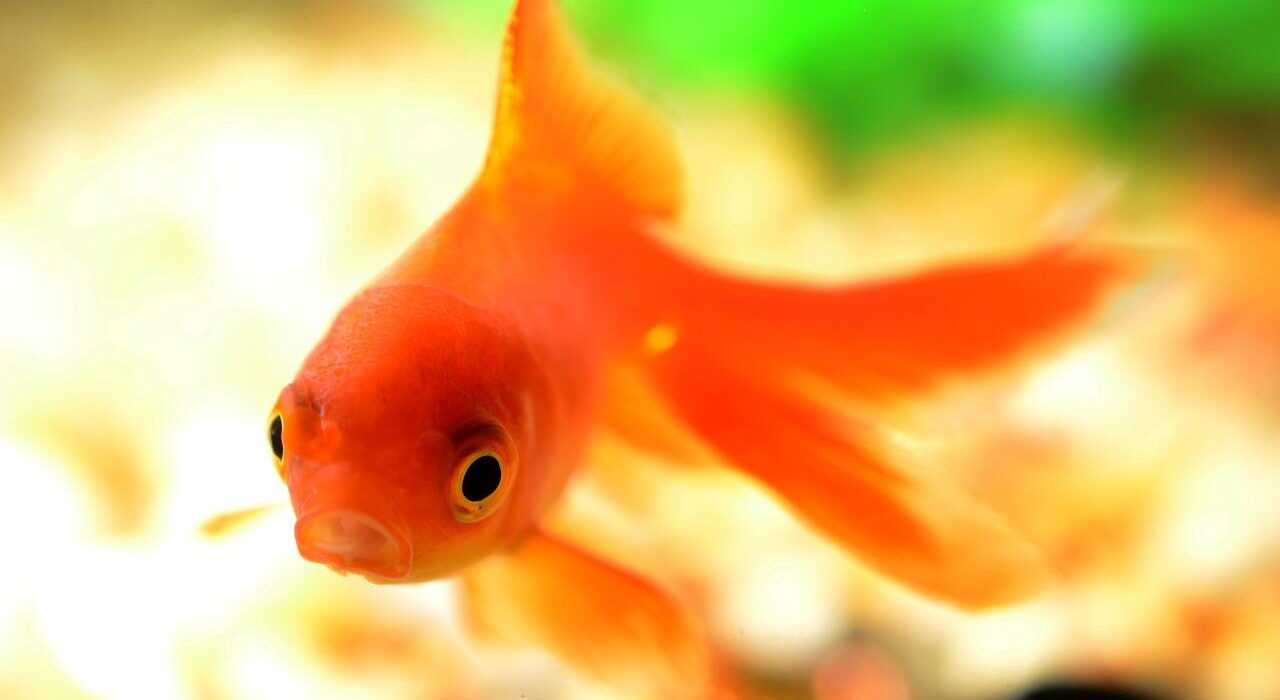In the tranquil world of aquariums, where the gentle hum of filters and the soft dance of aquatic plants create a serene environment, there’s a question that often bubbles up to the surface do goldfish sleep? This question, seemingly simple, opens the door to a fascinating exploration of the sleeping patterns of one of the most popular pets in the world. If you’ve ever peered into your aquarium at night and wondered why your goldfish seem less active but never truly asleep, you’re not alone. Let’s dive into the watery world of goldfish and unravel the mysteries of their sleep.
Introduction to Goldfish Sleep Patterns
Understanding the sleep habits of goldfish requires a shift in how we perceive sleep. Unlike humans, with our closed eyes and deep slumber, goldfish enter a state of rest that is quite different. This disparity often leads to the misconception that these creatures don’t sleep at all. However, goldfish do experience periods of rest, though these don’t mirror the sleep patterns we’re familiar with.
Goldfish, like many other fish, lack eyelids, so they can’t close their eyes. This fact alone has fueled myths about their sleep habits for years. Their rest is a state of reduced activity and metabolism, a pause in their otherwise active lives. Observing a goldfish during this time reveals a creature that is still but not inert, poised between wakefulness and a form of sleep.
The environments goldfish inhabit, both in the wild and in aquariums, have played a significant role in shaping their sleep patterns. Evolution has equipped them with the ability to stay alert to potential dangers, even in rest. This evolutionary trait ensures their survival, allowing them to thrive in various conditions, from the stillness of a pond to the gentle currents of a tank.
Do Goldfish Really Sleep?
To answer the titular question—yes, goldfish do sleep, but not in the way that mammals do. Their sleep is more accurately described as a state of rest or reduced activity. During this time, goldfish slow down, both in movement and metabolism, but remain aware of their surroundings. This light sleep state is essential for their well-being, allowing them to conserve energy and maintain their health.
The cycle of day and night plays a crucial role in the sleep patterns of goldfish. They are diurnal creatures, meaning they are active during the day and rest at night. The absence of light signals to goldfish that it’s time to slow down and enter their rest state. However, without the cover of darkness, goldfish might find it challenging to recognize when to rest, highlighting the importance of a properly managed aquarium lighting schedule.
The concept of goldfish sleeping with their eyes open might seem unusual, but it’s a common trait among many fish species. This adaptation allows them to stay alert to potential threats, even while resting. It’s a fascinating aspect of their biology that showcases the diversity of sleep habits in the animal kingdom.
Understanding the Sleep Cycle of Goldfish
The sleep cycle of goldfish is governed by the light-dark cycle, aligning with the natural rhythm of day and night. Unlike humans, who have a complex sleep cycle involving various stages of sleep, goldfish experience a simpler form of rest. Their bodies enter a state of reduced activity, which can be influenced by the amount of light present in their environment.
Aquarium lighting should mimic the natural light cycle to support the sleep cycle of goldfish. Implementing a consistent lighting schedule helps regulate their internal clocks, ensuring they get adequate rest. This cycle of light and darkness is not only vital for their sleep but also for their overall health, influencing behaviors such as feeding and social interaction.
The duration of goldfish sleep varies, but it typically happens during the night when the aquarium is dark. Observing a goldfish’s behavior during these hours can provide insights into their rest patterns. You might notice them hovering in one spot or swimming more slowly than usual, signs that they are in their rest state.
Goldfish Sleep Behaviors and Adaptations
One of the most telling signs of a sleeping goldfish is its position in the water. Many goldfish will find a secluded spot or simply hover near the bottom of the Goldfish tank. This behavior minimizes their movement, conserving energy during their rest period. It’s a stark contrast to their daytime activity, where they are often seen exploring and interacting with their environment.
Another adaptation related to their sleep is the ability to maintain buoyancy even while resting. Goldfish possess a swim bladder, an organ that allows them to control their buoyancy. This ability means they can remain suspended in water without sinking or floating to the top, even in a state of reduced activity. It’s a remarkable adaptation that enables them to rest without compromising their safety.
The sensitivity of goldfish to light and darkness as cues for sleep highlights the importance of their environment. In the wild, the setting sun and the rising moon naturally signal when it’s time to rest. In an aquarium, achieving a similar cycle requires careful management of lighting to provide these essential cues.
Factors that Affect Goldfish Sleep
Various factors can influence the quality and duration of goldfish sleep. One of the most significant is lighting. As mentioned, a consistent light-dark cycle is crucial for regulating their sleep patterns. Abrupt changes in lighting or prolonged exposure to light can disrupt their sleep, leading to stress and potential health issues.
Water quality is another critical factor. Goldfish are sensitive to their environment, and poor water conditions can stress them, affecting their ability to rest. Regular maintenance of the aquarium, including water changes and filter cleaning, ensures a healthy environment conducive to sleep.
Noise and vibrations can also impact goldfish sleep. Loud sounds or sudden movements near the aquarium can startle them, interrupting their rest state. It’s essential to place the aquarium in a quiet location and minimize disturbances, especially during their rest periods.
How to Create a Conducive Sleep Environment for Goldfish?
Creating a sleep-friendly environment for goldfish involves several key steps. First, establish a consistent lighting schedule that mimics the natural cycle of day and night. This can be achieved with a timer for the aquarium lights, ensuring they turn on and off at the same times each day.
The layout of the aquarium also plays a role. Providing hiding spots, such as plants or decorations, allows goldfish to find a secluded place to rest. These features not only enhance the aesthetic appeal of the aquarium but also contribute to the well-being of its inhabitants by offering them a sense of security.
Maintaining optimal water conditions is paramount. Regular monitoring and maintenance of the aquarium water, including temperature, pH, and cleanliness, create a stable environment that supports healthy sleep patterns in goldfish.
Signs of a Healthy Sleeping Goldfish
Recognizing the signs of a goldfish in a healthy sleep state can help you ensure their well-being. A resting goldfish typically exhibits slower movements and may hover in one spot or seek out a quiet area of the tank. These behaviors indicate that the fish is in its rest state, conserving energy for the activities of the coming day.
A healthy sleeping environment is also reflected in the overall health and behavior of your goldfish. Fish that are active and vibrant during the day, with good appetite and normal behavior, are likely getting adequate rest. Observing these signs helps you gauge the effectiveness of your aquarium management practices in promoting healthy sleep.
Conversely, signs of sleep disturbances, such as erratic swimming patterns or increased hiding during the day, may indicate stress or environmental issues that need addressing. Monitoring your goldfish’s behavior and making necessary adjustments to their environment can help ensure they achieve the rest they need.
Common Misconceptions About Goldfish Sleep
Several misconceptions about goldfish sleep stem from their unique sleep behaviors. The most common is the belief that goldfish don’t sleep because they don’t close their eyes. This misunderstanding overlooks the fact that goldfish, lacking eyelids, simply rest differently than creatures that can blink.
Another myth is that goldfish can sleep through loud noises and disturbances. While they might not react visibly, such disruptions can stress them and affect their sleep. Understanding the sensitivity of goldfish to their environment is crucial in providing them with a peaceful resting space.
The idea that goldfish only need darkness to sleep is another oversimplification. While a dark environment is essential, other factors, such as water quality and tank setup, also play significant roles in their ability to rest effectively. Comprehensive care goes beyond simply turning off the lights at night.
Tips for Promoting Healthy Sleep in Goldfish
Ensuring your goldfish get adequate rest involves a combination of proper tank management and environmental control. Here are some tips to promote healthy sleep:
- Maintain a consistent light-dark cycle with a timer for your aquarium lights.
- Provide hiding spots and a quiet environment to reduce stress and offer security.
- Monitor and maintain water quality to create a stable and healthy living space.
- Avoid disturbances near the aquarium, especially during the night, to minimize stress.
- Observe your goldfish’s behavior for signs of healthy sleep patterns and adjust their environment as needed.
By following these guidelines, you can create a conducive sleep environment that supports the well-being of your goldfish, ensuring they remain healthy and active.
Conclusion: The Importance of Understanding Goldfish Sleep Patterns
The exploration of goldfish sleep sheds light on the intricate balance required to maintain a healthy aquarium. Understanding that goldfish do indeed sleep, albeit differently from humans, underscores the need for a tailored approach to their care. By recognizing their unique behaviors and adapting their environment to meet their needs, we can ensure our aquatic companions thrive.
The serene world of the aquarium offers a window into the fascinating behaviors of goldfish, including their rest states. Through careful observation and management, we become stewards of their well-being, fostering an environment where they can sleep soundly and swim happily. So, the next time you find yourself gazing into the tranquil waters of your aquarium, remember the importance of sleep, even for creatures as seemingly tireless as goldfish.




